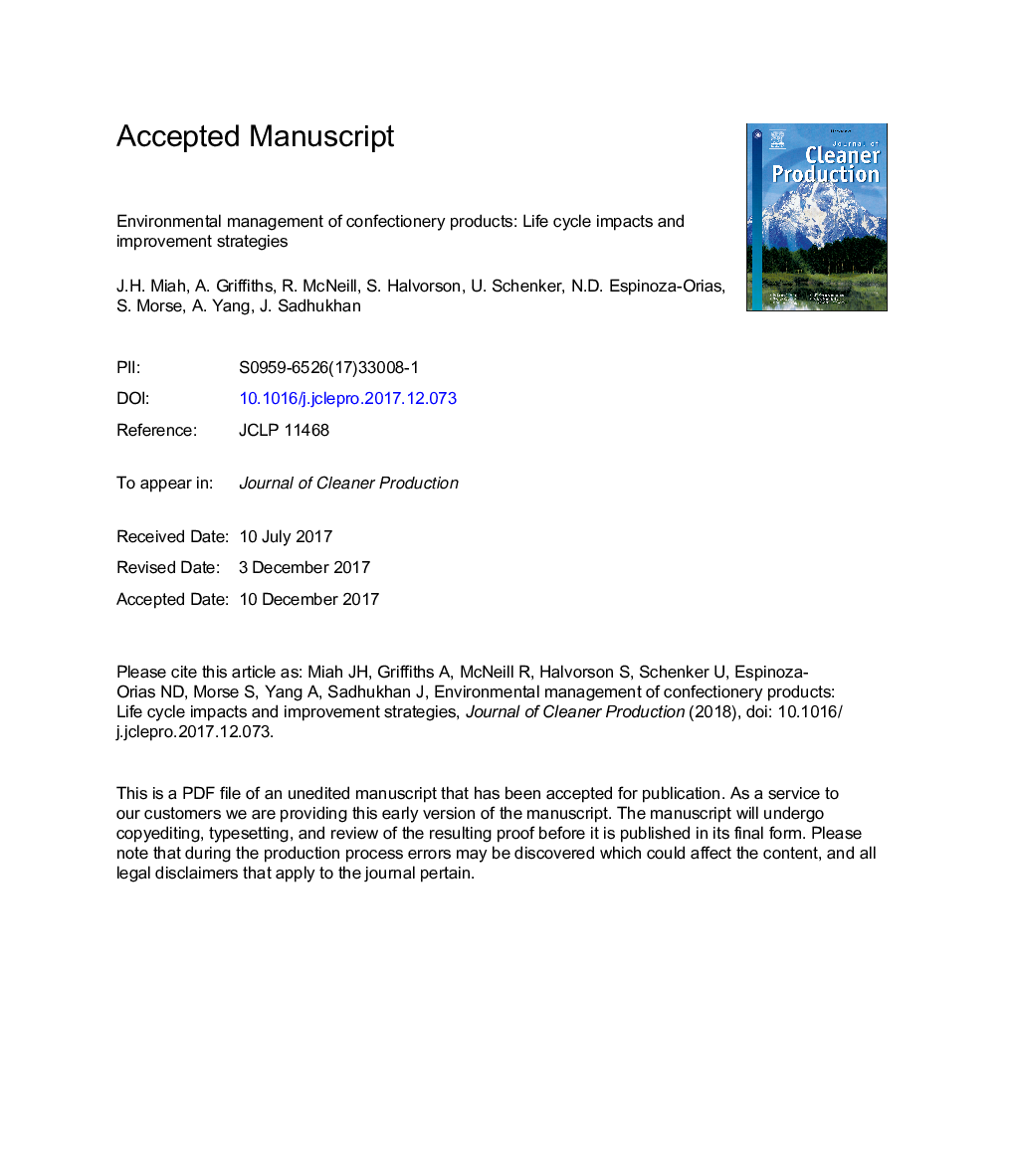| کد مقاله | کد نشریه | سال انتشار | مقاله انگلیسی | نسخه تمام متن |
|---|---|---|---|---|
| 8098797 | 1522076 | 2018 | 47 صفحه PDF | دانلود رایگان |
عنوان انگلیسی مقاله ISI
Environmental management of confectionery products: Life cycle impacts and improvement strategies
ترجمه فارسی عنوان
مدیریت زیست محیطی محصولات شیرینی سازی: اثرات چرخه زندگی و استراتژی های بهبود
دانلود مقاله + سفارش ترجمه
دانلود مقاله ISI انگلیسی
رایگان برای ایرانیان
کلمات کلیدی
موضوعات مرتبط
مهندسی و علوم پایه
مهندسی انرژی
انرژی های تجدید پذیر، توسعه پایدار و محیط زیست
چکیده انگلیسی
This paper presents the first environmental life cycle analysis for a range of different confectionery products. A proposed Life Cycle Assessment (LCA) approach and multi-criteria decision analysis (MCDA) was developed to characterise and identify the environmental profiles and hotspots for five different confectionery products; milk chocolate, dark chocolate, sugar, milk chocolate biscuit and milk-based products. The environmental impact categories are based on Nestle's EcodEX LCA tool which includes Global Warming Potential (GWP), Abiotic Depletion Potential (ADP), ecosystems quality, and two new indicators previously not considered such as land use and water depletion. Overall, it was found that sugar confectionery had the lowest aggregated environmental impact compared to dark chocolate confectionery which had the highest, primarily due to ingredients. As such, nine key ingredients were identified across the five confectionery products which are recommended for confectionery manufacturers to prioritise e.g. sugar, glucose, starch, milk powder, cocoa butter, cocoa liquor, milk liquid, wheat flour and palm oil. Furthermore, the general environmental hotspots were found to occur at the following life cycle stages: raw materials, factory, and packaging. An analysis of five improvement strategies (e.g. alternative raw materials, packaging materials, renewable energy, product reformulations, and zero waste to landfill) showed both positive and negative environmental impact reduction is possible from cradle-to-grave, especially renewable energy. Surprisingly, the role of product reformulations was found to achieve moderate-to-low environmental reductions with waste reductions having low impacts. The majority of reductions was found to be achieved by focusing on sourcing raw materials with lower environmental impacts, product reformulations, and reducing waste generating an aggregated environmental reduction of 46%. Overall, this research provides many insights of the environmental impacts for a range of different confectionery products, especially how actors across the confectionery supply chain can improve the environmental sustainability performance. It is expected the findings from this research will serve as a base for future improvements, research and policies for confectionery manufacturers, supply chain actors, policy makers, and research institutes towards an environmentally sustainable confectionery industry.
ناشر
Database: Elsevier - ScienceDirect (ساینس دایرکت)
Journal: Journal of Cleaner Production - Volume 177, 10 March 2018, Pages 732-751
Journal: Journal of Cleaner Production - Volume 177, 10 March 2018, Pages 732-751
نویسندگان
J.H. Miah, A. Griffiths, R. McNeill, S. Halvorson, U. Schenker, N.D. Espinoza-Orias, S. Morse, A. Yang, J. Sadhukhan,
